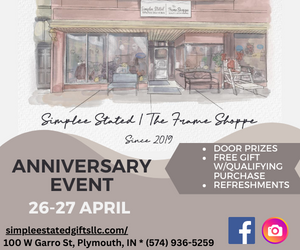 Every motorist has the responsibility to be safe. Safe driving includes behaviors while operating a vehicle as well as properly maintaining a safe vehicle and knowing what to do in an emergency.
Every motorist has the responsibility to be safe. Safe driving includes behaviors while operating a vehicle as well as properly maintaining a safe vehicle and knowing what to do in an emergency.
Because highways can be dangerous for pedestrians, motorists involved in crashes and breakdowns need to be knowledgeable about how to safely respond. Most drivers are likely to experience this kind of situation at some point, and it is impossible to establish recommendations for all conditions. However, it is important that all motorists make good choices to prevent tragedy.
What to do if your vehicle is disabled
If removing a vehicle from traffic is not safe or possible, or if people are injured, immediately call 9-1-1.
The safest place is off the roadway – especially on busy interstates. If possible, safely attempt to reach an exit ramp or shoulder and get as far away from moving traffic as is safely possible.
- Stay in the vehicle,
- Remain buckled up,
- Turn on flashing lights, and
- Call for help.
If anyone decides to exit the vehicle,
- Stay as far away from traffic as possible,
- Put your parked car between you and moving traffic,
- Do not turn your back to oncoming vehicles, and
- Always be aware of your surroundings.
If you and your passengers decide to leave the vehicle, leave a note on the dashboard explaining what happened and include contact information.
Fender bender? Move vehicles to the shoulder
INDOT and the Indiana State Police want motorists to be safe and keep traffic moving smoothly on busy highways. When crashes block traffic, it increases the risk of secondary crashes. If possible, move minor collisions off the roadway or to the shoulder.
Indiana law states that drivers involved in crashes that do not result in injury or death shall not obstruct traffic more than necessary. Off the roadway or on a shoulder is a much safer place to exchange information or wait for help. Don’t worry – your insurance coverage will not be compromised if you move your vehicle to the shoulder.
Move over for emergency vehicles
To protect lives, Indiana’s Move Over Law requires motorists to approach cautiously when an emergency vehicle is stopped with emergency lights flashing. Change lanes away from the emergency vehicle if you can do so safely. If not, reduce your speed 10 mph under the posted speed limit and proceed with caution. Emergency vehicles include:
- Police vehicles
- Ambulances
- Fire trucks and rescue equipment
- Highway incident-response vehicles
- Highway maintenance vehicles
- Utility service vehicles
- Vehicle recovery equipment (tow trucks)
Violating the law can result in a fine and your license will be suspended up to 2 years if you cause damage to emergency equipment, injury or death to an emergency worker.
Even though Indiana’s Move Over Laws state that motorists must move over and yield for only emergency vehicles, drivers should always be courteous to those who are broken down on the shoulder. Give them room so that they can safely repair their vehicles. Be an attentive and courteous driver and help prevent tragedies
Each year, more than 800 people lose their lives in crashes on Indiana roadways. Most of those crashes were caused by impaired driving, speeding, and aggressive or distracted driving. The following safety tips can help prevent the most common fatal errors drivers make and help drivers reach their destinations safely.Crashes are no accident!
- Buckle Up! Make sure you and your passengers are properly restrained.
- Never drive impaired. Avoid alcohol and drugs. Use a designated driver.
- Avoid distractions: Smartphones, audio devices and radio, and food and beverages.
- Drive defensively. Aggressive drivers take unnecessary risks and often cause crashes.
- Share the road. Look out for pedestrians, bicycles, motorcycles, and commercial trucks.
For more safe driving tips, visit www.YouHoldTheKey.in.gov














